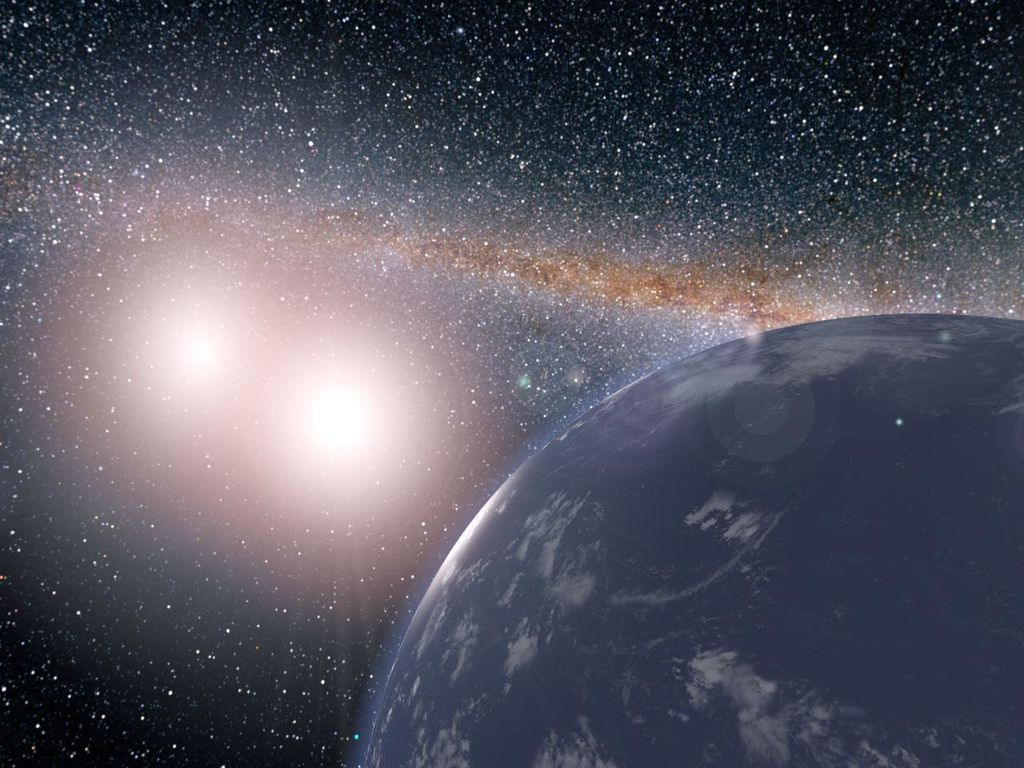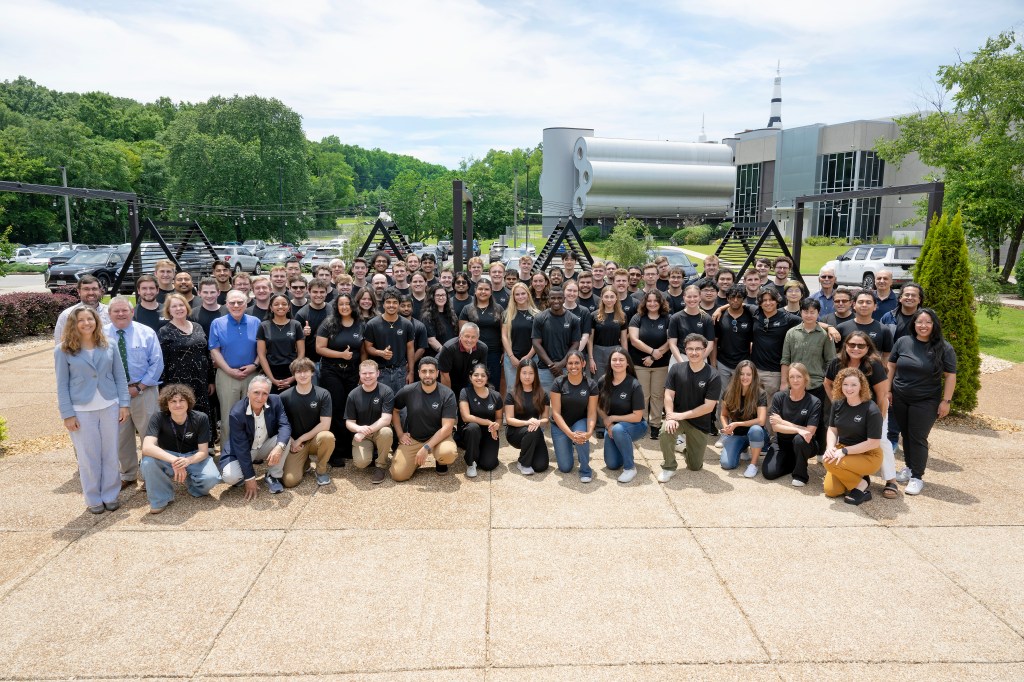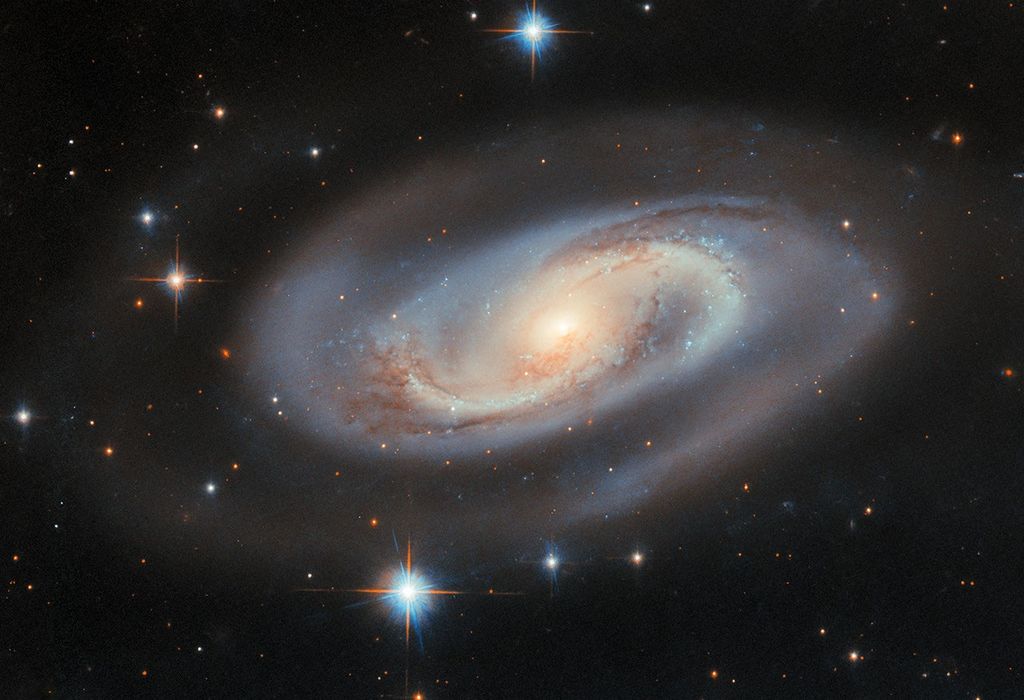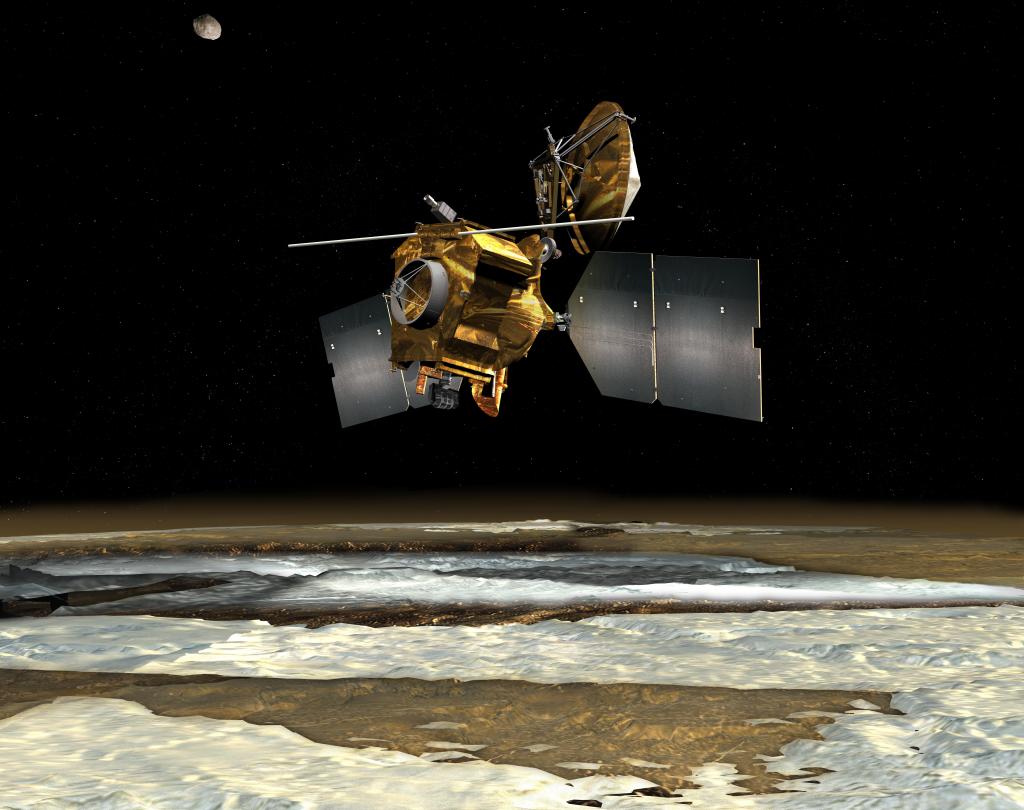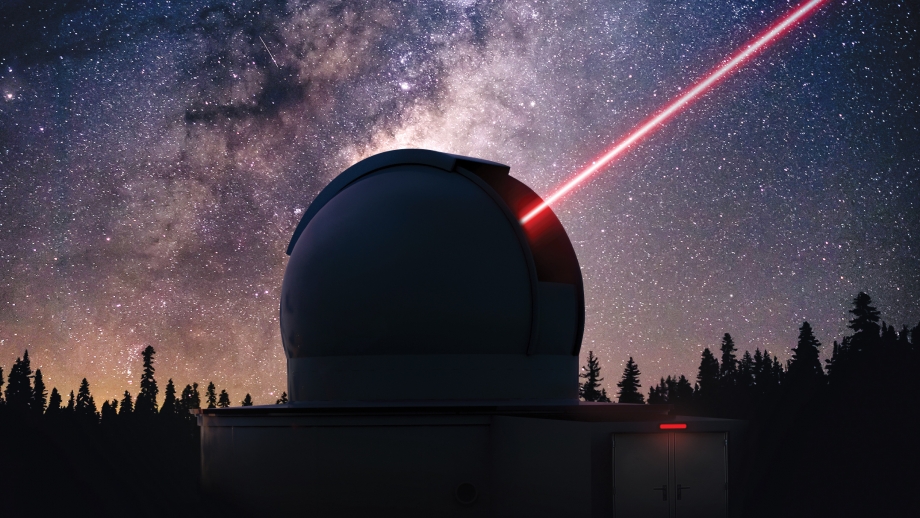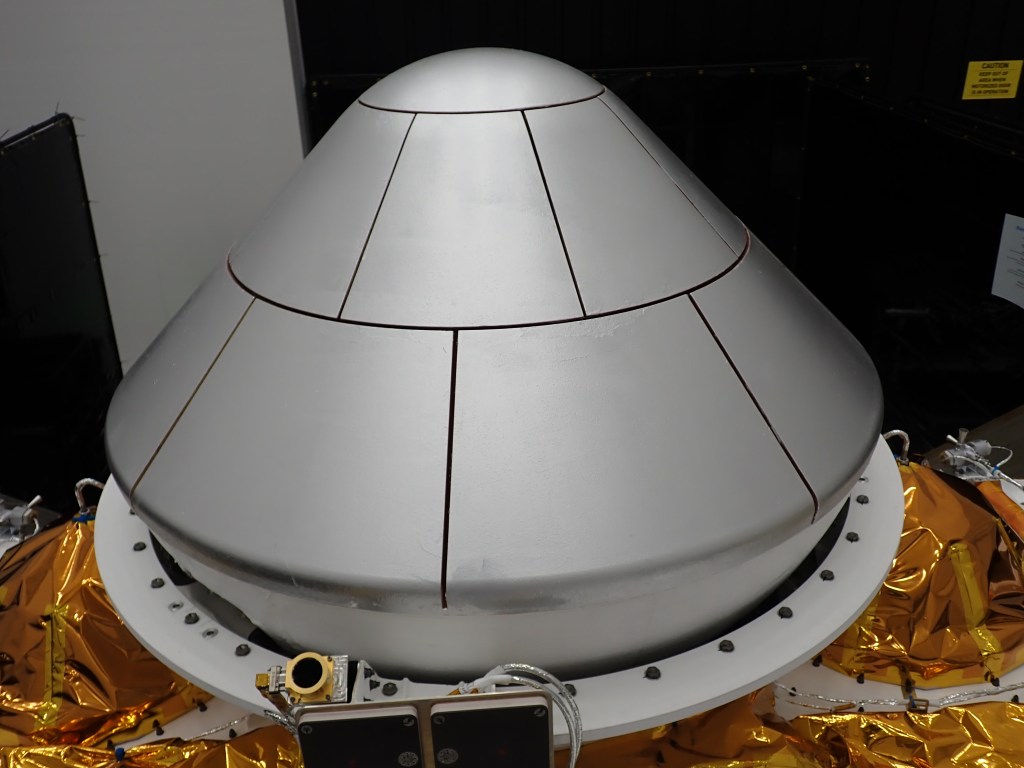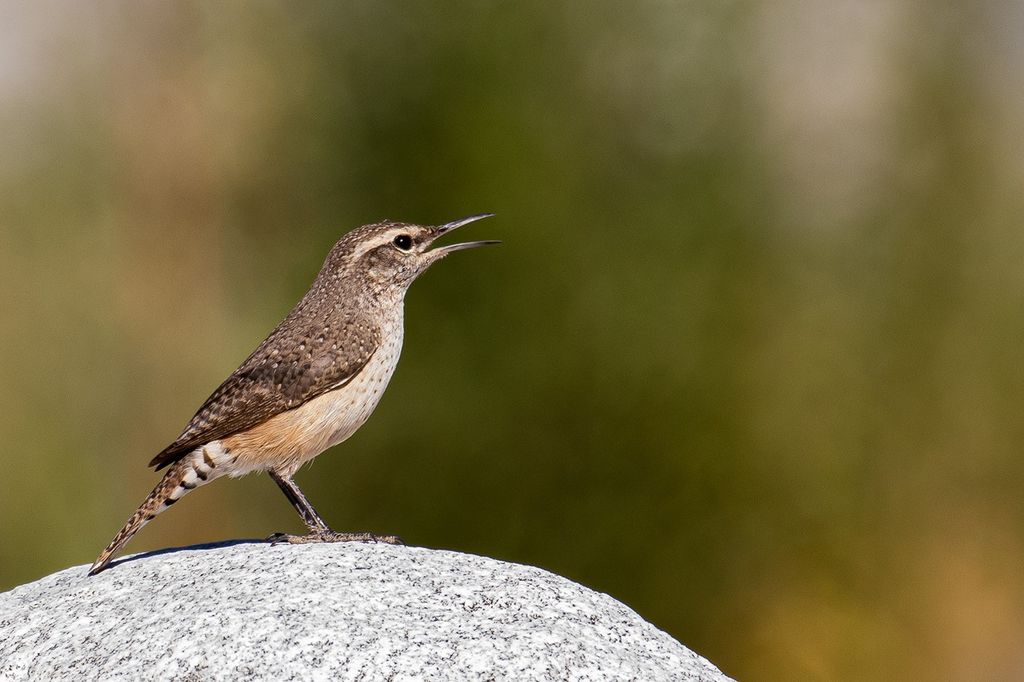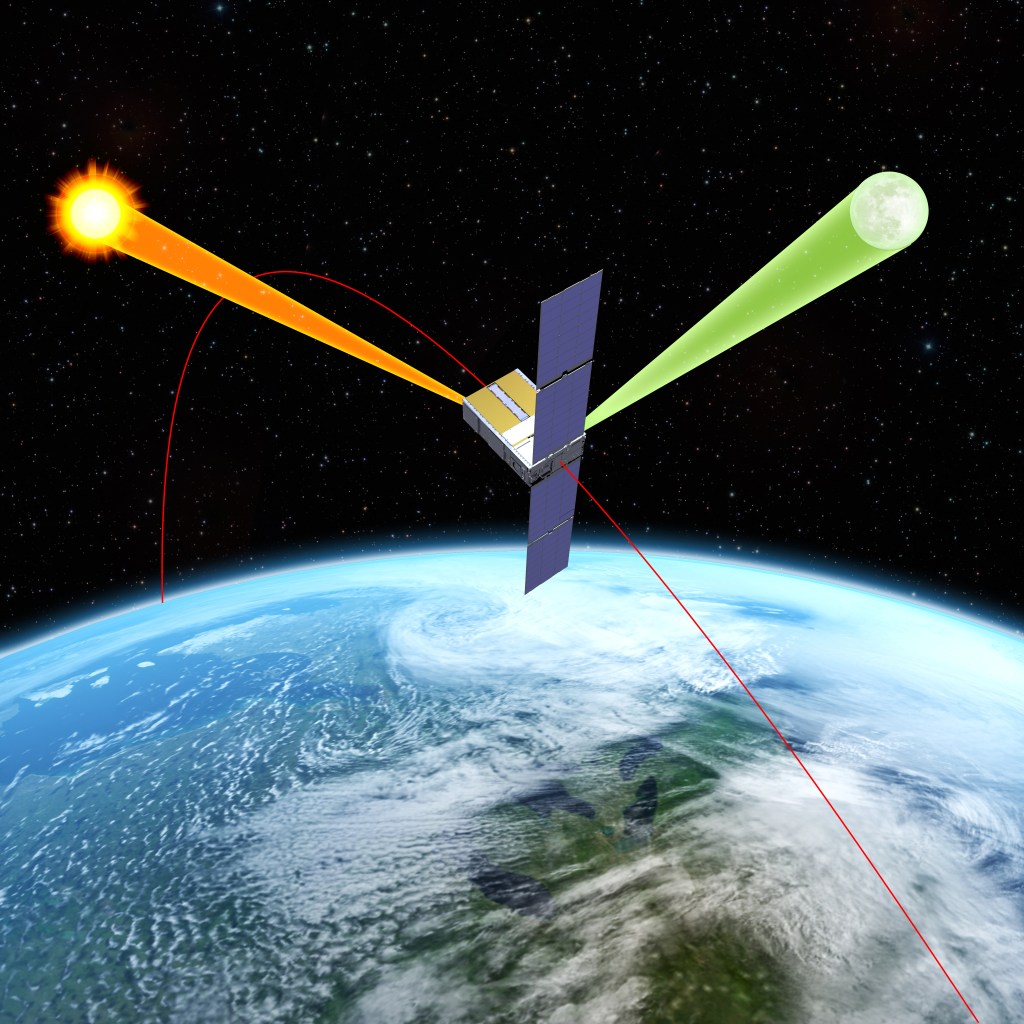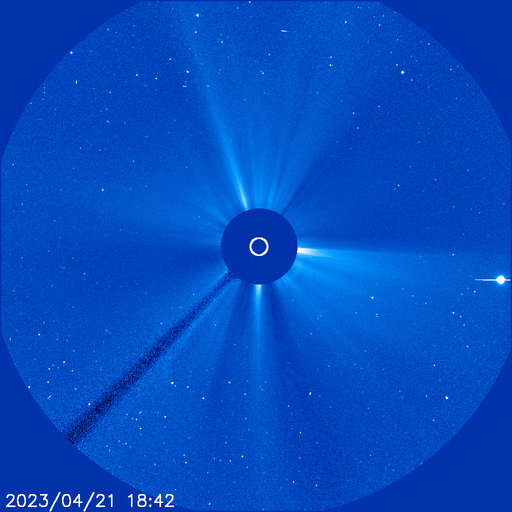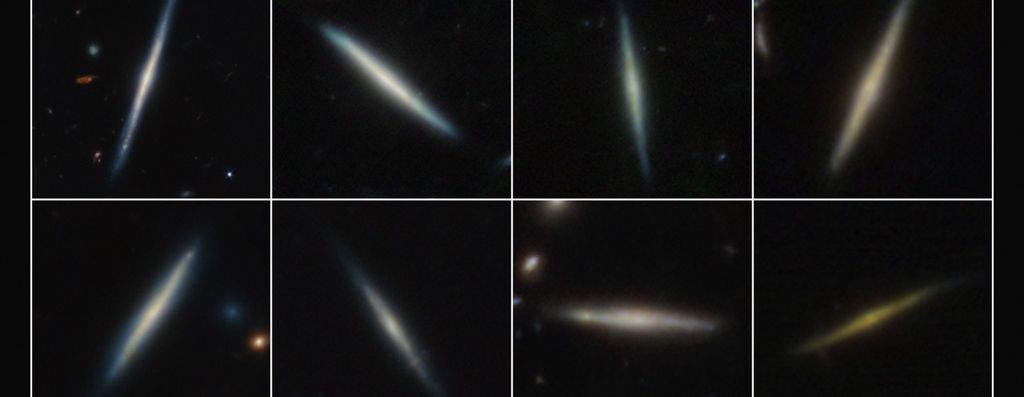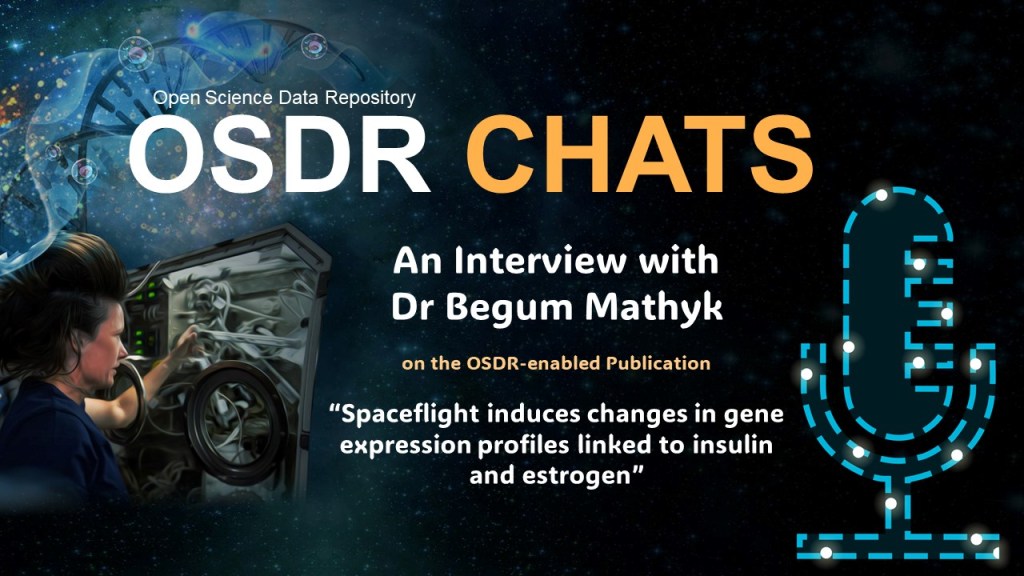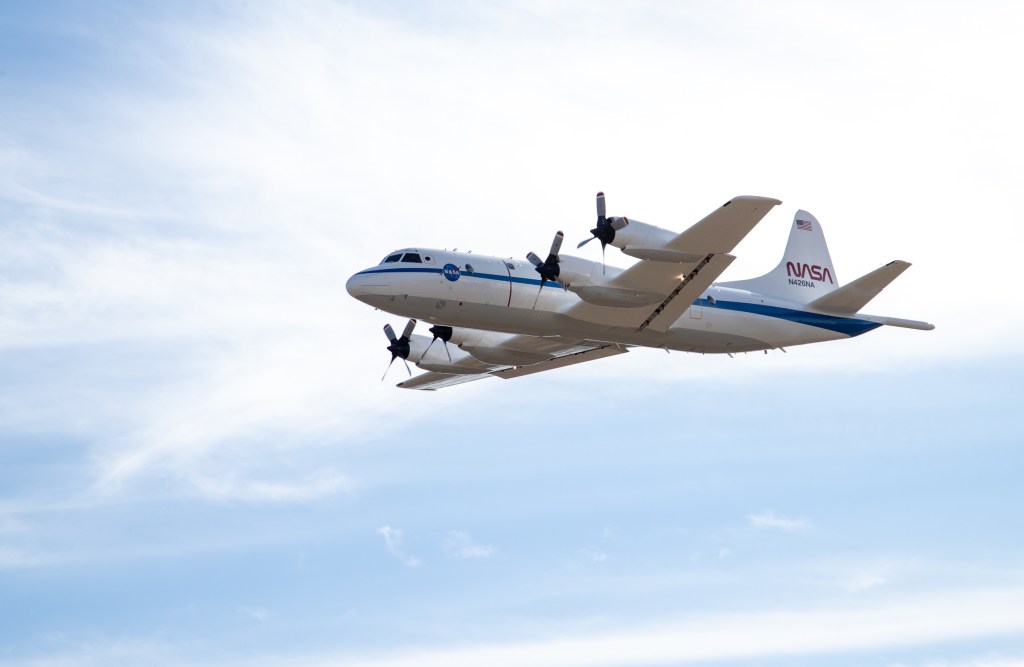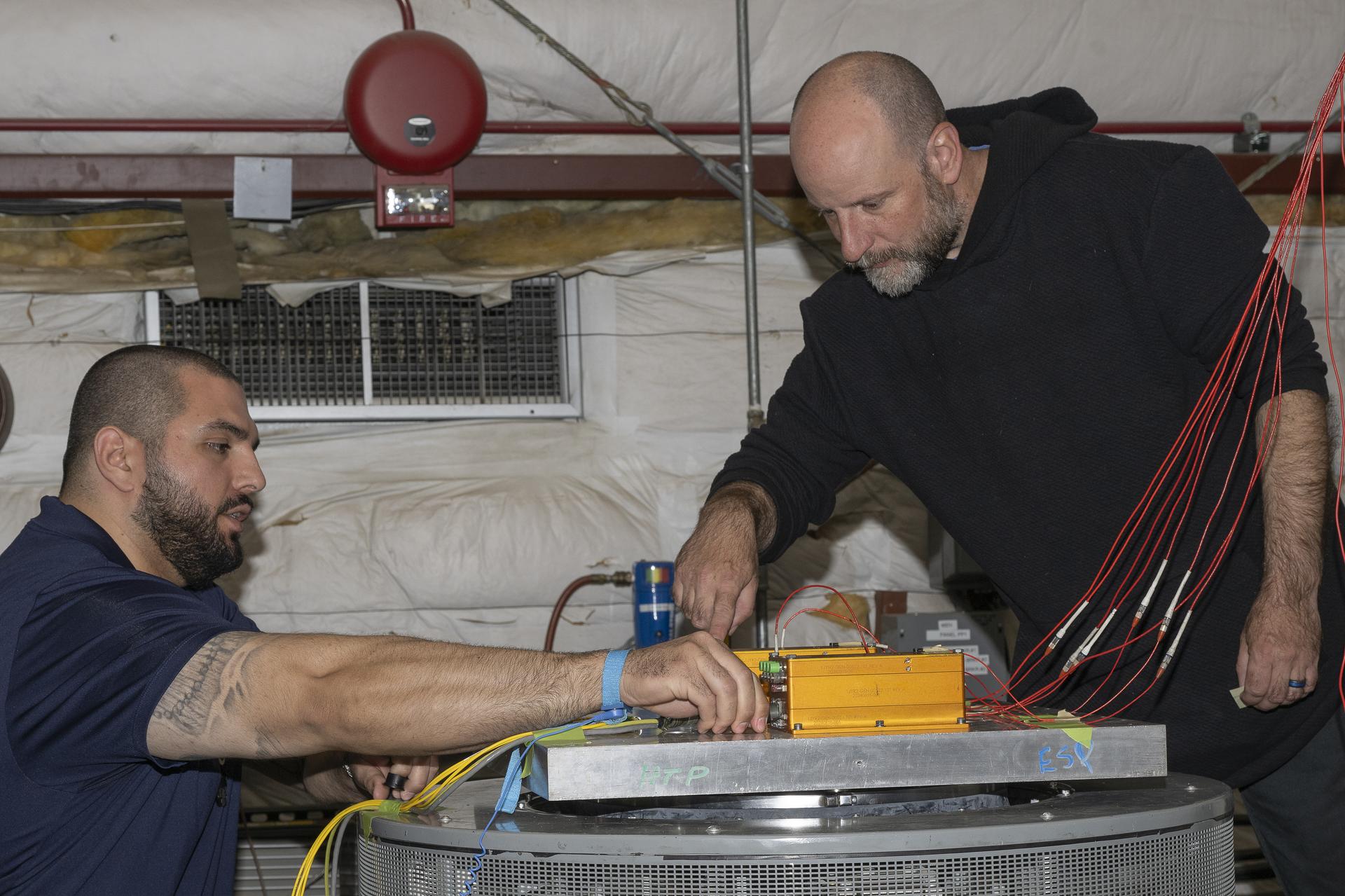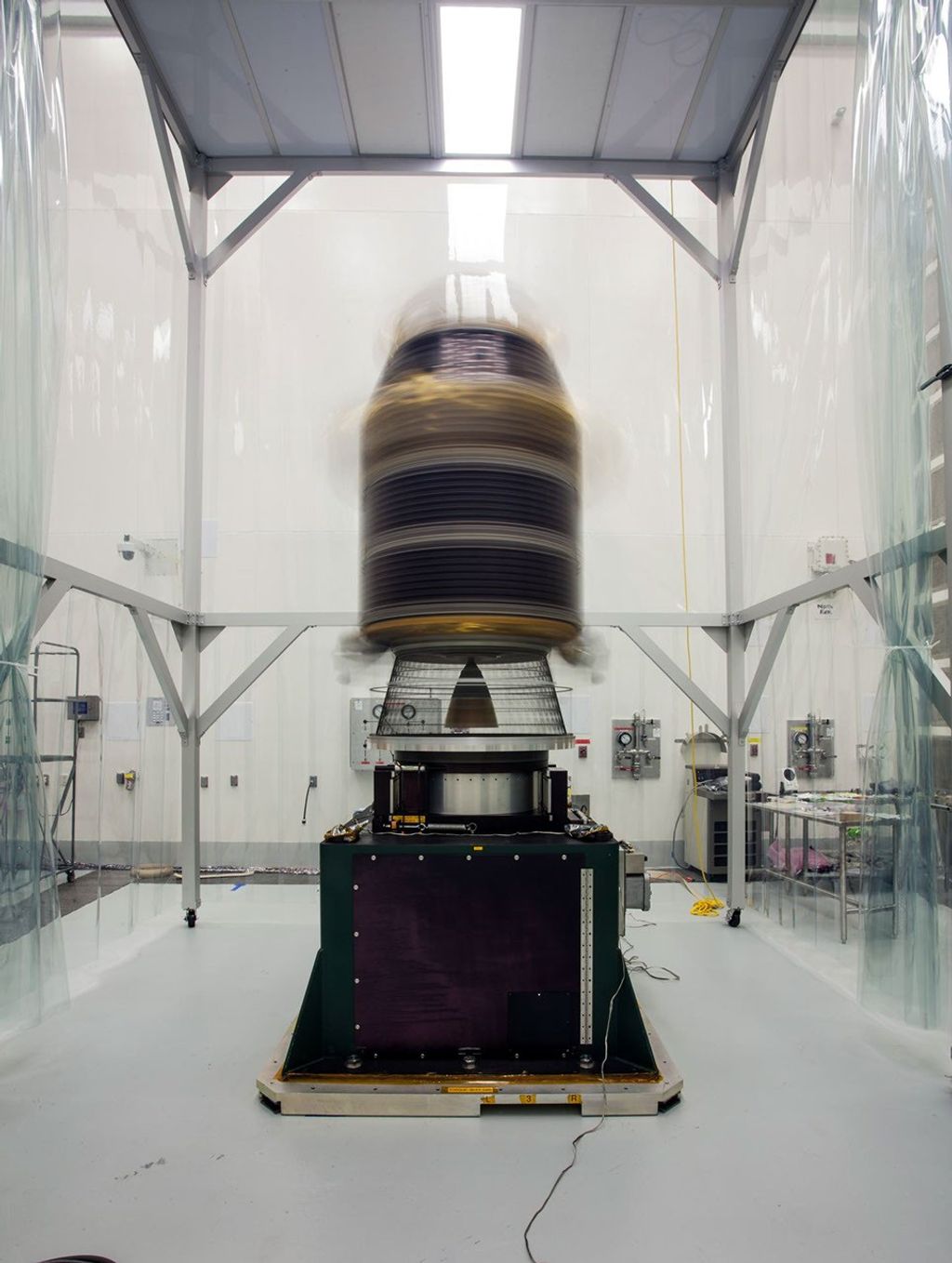Andrés Almeida (Host): Welcome to Small Steps, Giant Leaps, your NASA APPEL Knowledge Services podcast. I’m your host, Andrés Almeida.
How did we get here? It’s the ultimate question. NASA’s Cosmic Origins Program seeks to get us closer to the answer.
With us for this episode are Dr. Swara Ravindranath and Dr. Ron Gamble. Swara is the deputy chief scientist for the Cosmic Origins Program. Her research interests include understanding the emergence of the first galaxies, the evolution of galaxies across cosmic time, and the CO evolution of supermassive black holes and their host galaxies. She served as an instrument scientist for the James Webb Space Telescope. Ron is a theoretical astrophysicist researching the relationship between the high energy jets that emit from the centers of galaxies and the rotation of their supermassive black holes. He also mentors undergraduate and graduate students in underrepresented STEM fields. He’s also director of the cosmic Pathfinders program, a student and early career professional development program. So Swara, many people want to know:
How did we get here?
Ravindranath: So that is really the question that we ask in the Cosmic Origins Program. So to give you an idea of the Cosmic Origins program, NASA astrophysics has three big programs. Cosmic Origins seeks the answers to the question, “How did we get here?” Then there’s the physics of the cosmos, which seeks answers to the question of, “How does the universe work? And then there’s the Exoplanets Exploration Program, which seeks to answer, “Are we alone?”
So, Cosmic Origins is a theme that is so fundamental to our understanding of cosmic origins, the world around us, how galaxies, stars and planets, as we know, came to be. And the question of our cosmic origins is so profound and probably everyone has asked this question at some point or the other, even if you are not an astrophysicist by profession.
Host: So what sort of science does Cosmic Origins explore?
Ravindranath: Cosmic Origins explores a broad range of science themes that will help us answer the question about our origins and how did we get here. We are here on a habitable planet, the Earth, that orbits a star that is located in the Milky Way Galaxy, and that galaxy contains tens of billions of stars. Every element that makes up our body and everything else that we see on this planet was cooked in the fires of some stars as they evolved over millions of years and distributed that material as they exploded in their dying moments as supernovae. So understanding the formation of planets, understanding the formation of stars in the evolution, are an integral part of understanding our origins.
However, the Milky Way is not the only galaxy. There are billions of galaxies, so the formation and evolution of galaxies also becomes the context in which we begin to construct the story of our place in the universe.
So, in a nutshell, cosmic origin signs encompasses a broad range of topics, from the formation and evolution of stars and planets to the evolution of galaxies over their entire cosmic history.
Host: That’s a colossal task. Ron, what does your research entail with the Cosmic Origins Program?
Gamble: So it kind of fits in kind of the galactic side. So, I look at things that are very high energetic but at the same time they’re emitting kind of what we call, like a multi-messenger astrophysics regime. So I’m looking at a lot of different things, a lot of different physics that’s going on near the centers of galaxies. We call those active galactic nuclei. But primarily, one of the things that is most important to Cosmic Origins is, like Swara said, cosmic evolution. So we’re actually looking at the evolution of galaxies. And when we’re looking at that, we’re actually looking at, well, what does the central engine, – the black hole – doing to drive that evolution? So, one of the things that I do in my research is I’m looking at mechanisms for how these energetic particles, protons, electrons, neutrinos, cosmic rays – all these things are coming off at near the speed of light – how do they get accelerated? How are these jets that are thousands upon millions of parsecs long – we’re talking millions and millions of light years long (these things are huge, very energetic) – how are they helping to drive the cosmic evolution? They’re interacting with other galaxies nearby. So what, what are those drivers? What’s going on near the black hole? Can we elucidate some new things that we haven’t seen before, and what are the theories? We have to work the math? So that’s part of my work, is turning the crank on the calculus and the coding and see what happens.
Host: So are there current projects or missions look at all these themes?
Ravindranath: So, when it comes to the interaction between supermassive black holes and galaxies, there are many NASA missions – that actually help us explore this in detail, and they span a range of wavelengths. For instance, the Hubble Space Telescope, the Webb telescope, the Chandra telescope, the XRISM telescope that was launched recently – all of these explore different wavelengths, and these are all important to understand the energetics of the processes that go on in galaxies and in supermassive black holes.
Host: Cosmic Origins Program has these Program Analysis Groups. What’s the purpose of those and what is the relationship with NASA?
Ravindranath: It’s a community-based interdisciplinary form, and they are helpful for coordinating community-led analysis and to support the Cosmic Origins objectives and the analysis and inputs that we get from the community are so useful for planning NASA’s future flagship missions, and also for prioritizing the activities that are needed for future exploration. And the COPAG, or the Cosmic Origins Program Analysis Group, serves as an essential conduit between the community and NASA. It engages the community to articulate and prioritize the key science drivers and mission technologies that need to be advanced for Cosmic Origins research. They also enable the cosmic origins science to reach a broad community through community outreach, and they also ensure that the diverse community is represented in NASA astrophysics.
Gamble: One thing I will add to that is that this type of structure is a very great way to incorporate new ideas into new missions coming up. So, Webb, Hubble, all the missions that Swara mentioned, this is where we get our new ideas. This is where some of these things kind of come together: the pen and napkin paper at dinner, those ideas. That’s how Webb started. So that is very essential to NASA astrophysics as we move forward, because everything that we’re doing needs to be available to the public.
Host: How important is it to have not just diverse fields of careers, but also diversity itself, all people of all sorts of backgrounds? If you can discuss that a little bit, Ron.
Gamble: Sure, it’s both geared to experiences, which we know of. But you know, one thing that the Astro2020 Decadal Survey kind of mentioned is kind of like a diversity of thought. So we need not just the new experiences, but we need those experiences to be matched with new ideas. And so with that, when you’re combining those together, you’re going to get crazy things. I’m excited for the future. Habitable Worlds Observatory is coming up. I hope to be still around when it launches.
But that is another one of those kind of, like, crazy ideas that came about, where we’re doing the good work now, early, to diversify the teams, not just in experience, not just where you graduated from, you know, not just ethnicity, demographics, anything like that, but like, what are you thinking? How do people think differently? How do how do we combine those ideas together, kind of like Legos, to make one large project that works for everybody’s needs? And I think that’s going to be Habitable Worlds Observatory.
Ravindranath: So are there specific Program Analysis Groups that either of you are involved in? And if so, how did you get involved?
Gamble: As the deputy chief scientist for the Cosmic Origins Program, I’m involved in pretty much all of the six science interest groups and the science analysis groups offering leadership, and, you know, offering opportunities for community engagement and representing the NASA Cosmic Origins programs at various conferences and meetings, and really enabling mentorship and involvement of early career scientists. And I’m particularly excited about the Cosmic Pathfinders Program that is run through the program office and led by Ron Gamble. Amazing leadership that Ron has shown. And this is a student-focused program which offers interface to NASA activities and NASA missions, and also it really nurtures professional growth of students in STEM so it’s a fantastic program.
Host: Let’s talk about Cosmic Pathfinders Program for a minute because, Ron, I understand it has its origins with you. Can youshare more?
Gamble: Sure. It was another one of those napkin ideas that started. I was on a train. I was supposed to be on leave, if Swara remembers, and I come back after being on leave. I’m like, “Okay, well, I have this 15-page document. Can y’all read it? This is a new program.” They’re like, “What is this? Ron, did you not sleep?” “No, I didn’t. But, you know, please read.”
But essentially it is, it’s in response to, again, a combination of my own experiences. I used to teach in academia for seven years. I’ve worked in government, the DoD [Department of Defense], a lot of different places, and one of the common factors that I’ve noticed, especially in astronomy, is students’ access to not just information, but access to experiences. So, I wanted to combine both of them together, and that is essentially what the Cosmic Pathfinders Program is. It is an early career and student-focused professional development program where we are, basically, we are connecting the broader student population to NASA astrophysics without the need of kind of, like, the firewall application of an internship.
So they’re getting many different experiences across many different activities, events, modes of interaction within the program. They can interface with the mission scientists. They can interface directly with the COPAG and then in the three other program offices as well, or the other two. But most importantly, the students that are involved in the program, they get the experience of an internship without having to actually apply to one. And we know the coveted NASA internship: 1,000 students apply, and 10 of them get them.
So, within this program, there’s no limit to what these students can actually do. One of the new things that we’re doing this fall is starting and initiating student chapters at universities. So that’s another way for students to kind of build agency for themselves and to also network amongst themselves and network with us directly, so that now we’re building a, we’re building a stronger community of students. These students will then eventually become the scientists of tomorrow, building our new observatories, which is what we want. I’m excited about it.
We have almost 600 students already in the community. We launched in January. So, this is growing really fast, but yeah. One of the most important things I will add here is that we have worked into the program, that there are a cohort of student leaders as well. So, the program isn’t just run by people with gray hair who have PhDs. I have some in my beard, but they are also led by students. So that was one of the strengths of the program, is that these are students led by students and students learning from students. I have found, and being a former teacher, that is very powerful when they can actually do that and grow in that capacity.
Host: So what opportunities are available with NASA for early career scientists right now. How can they get involved with future science?
Gamble: For one, they can get involved directly with the science through our science interest groups. So, we have a kind of a wide range of those across all the, you know, the entire electromagnetic spectra and, you know, different phenomena. So, students can kind of engage directly with the broader community that’s doing the science, and talk to them directly, ask questions, get engaged. That’s what we want them to do.
Another way is to, again, get involved with the Cosmic Pathfinders Program. So, there’s a lot of things happening there to get directly involved. And then also, you know, don’t be afraid to submit that internship application. One of the strengths of the program offices is that we are the ones kind of managing some of the science for the missions. And when the missions then offer internships, they kind of tell us initially before they advertise to the general public. So it’s kind of like a bypass, if you will. You’re in the express lane to get some of these opportunities engaging with cosmic origins and physics of the cosmos. So I definitely encourage the students to get involved. Don’t be afraid. Come up to us at the exhibitor booths where you see us at conferences. Ask questions and make those applications. Ask for recommendation letters. You know, ask if we have any recommendations for them. And, you know, send that cold email to the mission scientists.
Host: People want to help.
Gamble: Yes!
Host: Swara, we have experts and professionals who have decades of experience, they have all this knowledge. How do you transfer that knowledge to the next generation of scientists?
Ravindranath: So, getting involved in NASA activities like, you know, the Cosmic Pathfinders, for instance, is one way in which you can get involved. Another way to really pass on the information is by, you know, getting grad students and postdoctoral fellows, so you’re able to actually mentor them and transfer your knowledge, your experiences, and show them what are the paths to succeed. And very often, we all, as we, as youngsters, we all kind of dream and make a path for “this is how my career is going to go.” And very often there are stumbling blocks, you know, so it’s really the mentorship that you offer to your students that gives them that strength to meet difficult situations. Be positive and keep going, and also, you know, informing them about opportunities that are available.
And that’s one of the things that we do through the Cosmic Origins Program office, is we have newsletters, we hold town halls, and we also have a presence at various other conferences, which are attended by early career scientists and young researchers. We tell them about the opportunities. We give them guidelines on career paths and so on. So those are all different ways in which we can really transfer all our experience to the younger generation.
Host: So Ron, how did you start out in your field? How did you get here?
Gamble: Oh man. It was a kind of a rocky journey. So I started in astrophysics in grad school, my graduate program was kind of the first ever at my university. I graduated from North Carolina Agricultural and Technical State University. It’s an HBCU in Greensboro, North Carolina. My PhD in nonlinear gravitational wave theory was the first one there. So I kind of, like, kind of carved my own path there and making sure, you know, I don’t throw dirt on the people coming up behind me, right, as I’m shoveling away.
But getting here, I kept doing research because I knew, I knew I wanted to work at NASA. So I was telling my mom, like, in four years, I’m gonna work at NASA. Fast forward, it’s 2019, 2021, is when I started. And again, like I said, I sent that cold email, I sent my resume out to our division, our deputy director, and I got a response back. And so that’s how I got here.
And then six months after that, I was I met, you know, our chief scientist, Peter Kurczynski, who told me about Cosmic Origins. And I’m like, “What’s that? That sounds cool.” And I had known about the program offices, but I didn’t know what it what we did, what did you do in the program offices? And then I met the team, and I really kind of settled in on everything that we’re doing and why we need to do it. And I’m like, “Okay, this is great. Why isn’t everybody else here?” It’s like, “Oh, well, we keep a, we keep a relatively small team so that we can work fast.” But yeah, I love it here. I love our team. I love what we’re doing. I hope to keep doing it for a long time.
Host: Yeah, you’re tackling the big, big questions.
Swara, how about yourself? How did you get involved? How did you start?
Ravindranath: So, as a student, I was interested in physics, and then got interested in astronomy by reading popular magazines and books. And there was a time when I, actually with my sister, we were a team. We built a telescope and actually seeing the craters of the Moon with a telescope that you built from scratch – it just feels like an amazing achievement. And then it just caught on.
And then I did my doctoral studies in India at the Indian Institute of Astrophysics in Bangalore. I studied star formation properties of very intensely star forming galaxies, which are called starburst galaxies. And then I went on to do my postdoctoral research at Carnegie Observatories in Pasadena, California. And also I spent part of my postdoctoral research at Space Telescope Science Institute, and ended up using a lot of Hubble data, and was just such a big fan of the Hubble Space Telescope.
And then I went, moved back to India as a professor. So I was teaching for about six years, and then when an opportunity came to work on the Webb telescope, I just couldn’t let it go. So I came in as a Webb instrument scientist at the Space Telescope Science Institute. I was lucky enough to be there for the launch and commissioning for about 10 years and had various roles in that position. So that was just such a rewarding experience. And just last year, I moved to NASA Goddard as the deputy chief scientist for the Cosmic Origins Program, and I just love it here. I have a great team to work with.
Host: What do you consider to be your giant leap?
Ravindranath: My giant leap really, is the ability to be on the Webb telescope launch and commissioning team. So that was 10 years of my life. And while I was the instrument scientist, I got to play different roles within the Webb project. I was the lead for the exposure time calculator, which is a software that the observers used to plan and design their observations. And then I was also the deputy lead for the Webb calibration team, which again, is a software that users or the community uses to get the best science by processing the data and doing the data analysis. And I was also part of the early release observation.
So, it was an amazing experience to be on a team that saw the very first science images that came out of the Webb telescope. And I still remember every morning at 9 a.m. we used to have these meetings where we would look at the data that came the previous night. And you could see that entire room just became children, just the curiosity of children. Everyone’s so excited. They’re like, “Oh, look at that look at that feature! Oh, look at that galaxy!” You know, we just, we were just one team, one group, just so enthusiastic. And, you know, it just felt like children being curious about the universe. And I think that’s a very rewarding experience, and I’m very thankful I had that opportunity.
Host: That curiosity did transmit to the world. I think a lot of people felt that way. Ron, what do you consider to be your giant leap?
Gamble: I would say it’s kind of everything I did to get to the point where I was offered a position at NASA. So that is like, that’s like, a coveted kind of role here. So being a theorist, we don’t, there’s, there’s not a lot of us doing it, number one, and then two, most theorists we don’t think that we could actually kind of find a research place at NASA who’s primarily doing observational work. So being at NASA and kind of conducting learning my own research in theory was like a dream. This is my dream job. So that’s my giant leap: It’s being able to kind of make one of my dreams a reality.
But then also, you know, through the various programs that we have, making sure that students also get the same reality. So that’s and seeing that on their faces when you can show them, “Hey, well, apply to this,” and they come back to you six months later, “Oh, I got the internship!” It’s like, “Oh, my god, yes!” Like, what do I, I want to like, crush on you. But I can’t because you’re not, like, my child. But it’s, that is, that’s one of my giant leaps, seeing that progress and seeing that glow it’s amazing. You can’t replicate it.
Host: One final question for you all. You give advice for young professionals and graduate students. What about for mid-to-late career professionals? What advice do you have for people who get stuck in a rut, perhaps?
Ravindranath: Good question. Because, you know, I very often hear people asking about what advice do you have for the early career scientists? But as you rightly point out, people who are in mid-career, I mean, they are also stuck sometimes, right? Because a career doesn’t pan out the way you planned it to be or you dreamt what it was. One of my advice to them is, in everybody’s career, everybody does go through those difficult stages, so it’s important to stay positive. And if the path, if you have to stray from the paths that you have planned, life always takes us through different paths.
But rather than getting frustrated or getting annoyed or kind of thinking that you’re not good enough, just be positive and use that opportunity as something new to learn an avenue that you never thought. I mean, it’s probably a new door that’s opening up. So you always learn from experiences in life. Life does not go as we expect it, but take the opportunity to learn things and stay positive. You may have to change your course, but that’s okay, you know? You may have a great opportunity to contribute elsewhere, it may not be the one that you planned.
So take those opportunities, and you know, look ahead, try to do your best, try to contribute and feel good about yourself. I think feeling good about yourself and being interested in what you do is very essential for your own wellbeing. I think it’s not just a career advice, it’s also for your own wellbeing. You have to love what you do and you can always find new paths. There’s nothing wrong with finding a new path.
Gamble: I mean, I would kind of double down that, you know? But I would add that as you kind of are transitioning into your mid-career and later, you can’t lose that curiosity. You can’t lose the reason why you actually got in the field, which, you know, you were younger, everybody, we all looked up and we wondered, “What is that? Like, what’s that shining? What else is out there?” So especially us theorists, any mid-career or later theorists out there: Keep being curious. Like, drive, let your creativity kind of drive some of the science as well. That’s how we get new stuff. That’s how we get new theories. That’s how we can get new things to kind of point our telescopes at also. But yeah, I would say, you know, keep wit it and again, like what Swara said, keep carving your path, because you’re still going, even at mid-career or later.
Host: Ron and Swara, thank you so much for sharing your insights. Thank you for your time today.
Gamble: Thank you.
Ravindranath: Thank you for having us.
Host: That’s it for this episode of Small Steps, Giant Leaps. For more on Ron and Swara or the topics we discussed today, visit our resource page at appel.nasa.gov. That’s A-P-P-E-L dot NASA dot gov. And don’t forget to check out our other podcasts like Curious Universe and Houston, We Have a Podcast. Thanks for listening.

